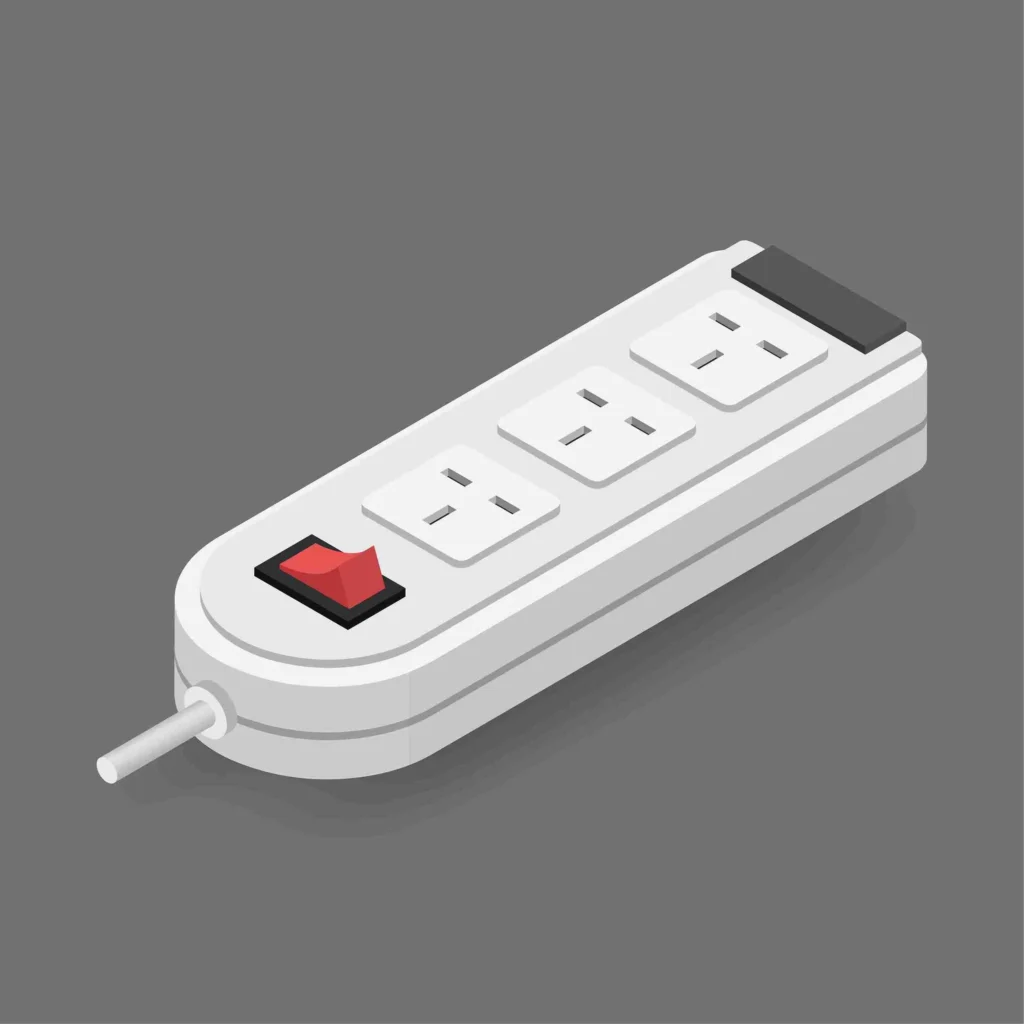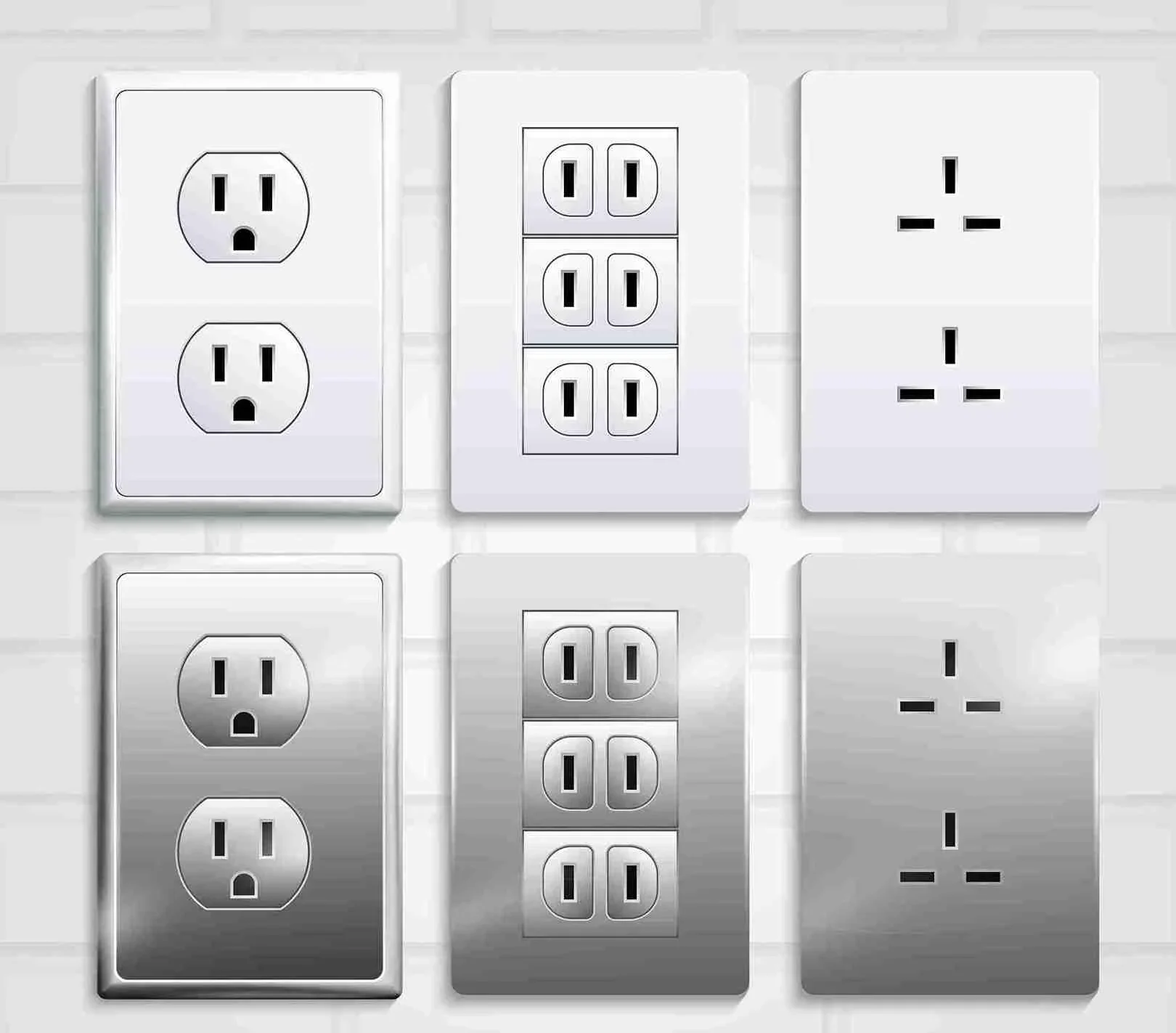As a homeowner, ensuring a safe environment is essential for a comfortable space to live. Your home’s electrical system plays a significant role in the safety of your household, helping to protect against dangers like electric shocks and fires. Among the critical devices for this purpose, the GFCI outlet stands out.
A ground fault circuit interrupter is designed to detect irregularities and cut off power to prevent accidents. In modern construction, homes are typically built and sold with GFCI outlets installed, meeting contemporary requirements. However, if you own an older home, it’s essential to notice whether your outlets are up to standard and discuss with an expert about upgrades.
Different types of outlets serve various purposes in your living areas, bathrooms, and kitchens. While plain outlets are common for everyday use, GFCI outlets feature distinctive buttons and offer added protection, particularly in areas exposed to moisture.
For heavy-duty needs, appliances like clothes dryers use hefty-looking prong outlets. Understanding how these outlets differ and knowing when to upgrade is important for maintaining a safe and efficient household.
What Are the Differences Between GFCI Outlets vs Regular Outlets? – The Short Answer

What Makes GFCI Outlets Essential?
A GFCI outlet, also known as a GFI device, is designed to protect people from electrical shocks caused by a ground fault. These faults occur when current is unintentionally diverted from its intended path, often through water or a human, which can be deadly. The circuit interrupter in these outlets works by detecting even a small imbalance in the current as it travels in the wrong direction.
When an error is detected, the GFCI responds within a fraction of a second to stop the flow of electricity along the alternate path, preventing serious harm. These life-saving devices are essential wherever moisture or risk of contact with water exists, ensuring safety by guarding against potential hazards.
Understanding Standard Outlets
In homes today, you’ll typically find three-pronged outlets in living spaces, designed to provide safety and convenience. These outlets, often installed in modern living spaces, feature two vertical slots with a ground pin situated in the middle. The most common type is the 15-amp regular outlet, which is widely used for everyday needs.
Some homes may also have 20-amp outlets, designed to support appliances requiring more power. These outlets are similar in appearance to the 15-amp ones but include a horizontal slot, connecting with one of the vertical slots to form a sideways T-shape. Consider these as essential components for most electrical setups today, ensuring safe and effective connections while securely sitting under your devices.
Differences Between GFCI Outlets vs Regular Outlets
When discussing outlets, the main point that people notice is the differences in their look and location. A GFCI outlet stands out from a regular one due to its design and safety features, which are easy to recognize in homes or outdoor spaces where protection matters most.
Appearance of Standard Outlets vs GFCI Outlets
When it comes to distinguishing between standard outlets vs GFCI outlets, their appearance differs in noticeable ways:
- Standard outlets are generally smaller in size, making them easy to identify.
- GFCI outlets, on the other hand, have buttons on the outlet face. These include a TEST button and a RESET button.
- The buttons on a GFCI outlet serve a specific function to ensure safety by testing and restoring electricity flow.
Practical Features of GFCI Outlets
- Pressing the TEST button triggers a snapping sound, indicating the power has been cut to the connected plugs.
- The RESET button allows you to restore electricity and resume normal function.
- For added assurance, you can use a voltage tester or a small device to confirm whether the connections have been properly shut or restored.
Why Choose GFCI Outlets?
- GFCI outlets are more reliable for safety, though they can sometimes fail and require replacement.
- Regular testing of the outlet ensures it continues to protect against potential hazards.
- They allow homeowners to maintain a safer environment, especially in areas prone to electrical risks.
By understanding these subtle yet important details, you can confidently distinguish and make informed decisions about which outlets best suit your needs.
Location of Standard and GFCI Outlets
Understanding where GFCI outlets and regular outlets should be installed is essential for maintaining safety and meeting the National Electrical Code (NEC). The placement of outlets in a home is strategically mandated to reduce and prevent electrical shocks, ensuring protection in high-risk areas.
GFCI outlets have been required in bathrooms since 1975 and in kitchens since 1987. These outlets are installed in damp or wet parts of a home, such as wet bar sinks, utility sinks, garages, crawl spaces, unfinished basements, and outdoor areas. Their ability to cut off power instantly helps prevent accidents caused by water and moisture.
In contrast, regular outlets are placed in spots less likely to be exposed to water or moisture, like bedrooms, offices, and living rooms. These areas are generally safer and do not require the additional protection provided by GFCI outlets.
When making updates or installing new outlets in older homes, it’s important to consider the age of the property. Depending on the home’s condition and when it was built, you may need to upgrade to meet modern safety standards. Newer homes have had GFCI outlets installed for decades to align with the NEC guidelines.
Personal Experience
In my experience, upgrading an older home to include GFCI outlets is a worthwhile investment. I recently replaced the outlets in my garage and outdoor areas, as these are prone to water exposure. Following the mandated standards made me feel confident in the safety of my family and property.
Testing a GFCI Outlet Made Simple
To test your GFCI outlet, start by pressing the test button to check if the electrical current is interrupted as expected. When done correctly, power to the connected appliance or device will shut off, and the reset button should pop out. Simply click the reset button again to restore power.
For added assurance, consider using a tester—these are inexpensive tools that can see if your outlet works properly and can be easily purchased at your local home improvement store. This is a reliable way to ensure everything is functioning correctly, especially for starters looking to maintain their outlets efficiently.
Ideal Locations for Installing GFCI Outlets
When choosing where to place GFCI outlets, it’s essential to consider locations prone to moisture. These specialized devices are designed to help prevent disaster in areas like kitchens, bathrooms, garages, and laundry rooms where water can conduct electricity and increase the risk of electrocution. As per the National Electrical Code (NEC), it’s a requirement to have GFCI outlets installed in these areas to ensure safety. You should carefully review these requirements and note that even exterior outlets in your home need this protection.
In addition to kitchen counters, unfinished basements, and wet bars, the NEC mandates GFCI protection within six feet of any water source. Houses built after 2014 are often equipped with circuit breakers that provide entire house protection during construction, ensuring modern homes meet the latest safety standards. If your house was built before the 1970s, you likely have standard outlets without GFCI protection, which should be replaced to reduce the risk of electrocution.
Based on findings from the Electrical Safety Foundation International (ESFI), electrocutions have dropped by 83 percent since GFCI technology was introduced, highlighting its importance. For older homes, replacing existing outlets is a straightforward way to align with safety standards. Whether you’re upgrading an unfinished basement or safeguarding your kitchen, ensuring your home is protected is a small step that makes a big difference.
Are GFCI Outlets Essential for Your Home?
When it comes to ensuring safety in your home, GFCI outlets are vital devices that can prevent devastating electrical shock. These outlets are not only required by law, especially when you plan to sell your property, but they also offer significant benefits by protecting both older homes and new constructions.
Unlike a typical outlet, a GFCI provides a layer of protection for the entire circuit or a single outlet, depending on how it’s installed. Meeting specified requirements is crucial to upgrade your home’s safety and bring much-needed peace of mind. These outlets are designed to identify potential dangers and effectively protect your household. From ensuring your home stays safe throughout to providing an essential safeguard against shocks, GFCI outlets truly make a difference.
When it comes to safety, understanding the difference between a GFCI outlet and a regular outlet is crucial. GFCI outlets are advanced devices that actively work to detect shifts in electricity flowing through the circuit. If a sudden change in the current occurs, they shut off immediately, offering protection to your household.
If your home still doesn’t have these essential outlets, it’s important to act. They’re widely used in areas like kitchens and bathrooms, ensuring your safety in the event of an electrical fault. Don’t hesitate to contact professionals like Staley Electric for expert services to install or upgrade your outlets.
FAQs
Can You Replace a Regular Outlet With a GFCI?
Yes, you can replace a regular outlet with a GFCI outlet easily. Just ensure you properly connect the line connection and the load connection, as they control the flow of electricity in the circuit.
How is a GFCI Outlet Unique?
GFCIs are specialized safety devices that turn off electrical power when they detect a ground fault, making your house and family much safer. These outlets prevent electrocution, electric shocks, and burns, especially in areas like the kitchen, bathrooms, and garages, where electrical devices may come into contact with water. Unlike regular outlets, GFCIs are a vital tool for enhancing electrical safety.
How to Identify a GFCI Outlet?
You can visually spot a GFCI outlet by checking for two buttons labeled reset and test. Unlike regular outlets, GFCI breakers may have red and black buttons, while AFCI breakers often feature an all-white design for easy identification.
Must Every Outlet Be a GFCI Outlet?
Not all receptacles need GFCI protection, but specific areas like bathrooms, garages, crawl spaces, basements, and laundry rooms must comply with the 2023 update of the National Electrical Code. These codes require GFCI in locations where a water source is present, including kitchens, to ensure enhanced protection by expanding requirements.
Are GFCI Outlets Safer Than Regular Outlets?
When it comes to safety at home, GFCI outlets are the smart choice. These devices protect against electrical shock, making your space safe and reducing the risk of devastating accidents. They are required by law in modern constructions and even in older homes if you plan to sell your property. This makes them essential for a well-protected and compliant home.







